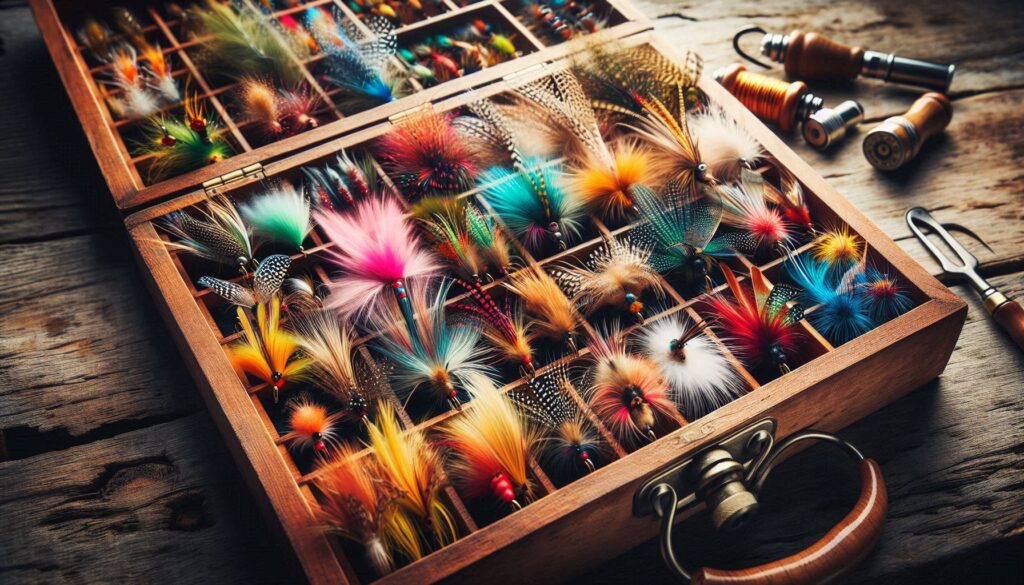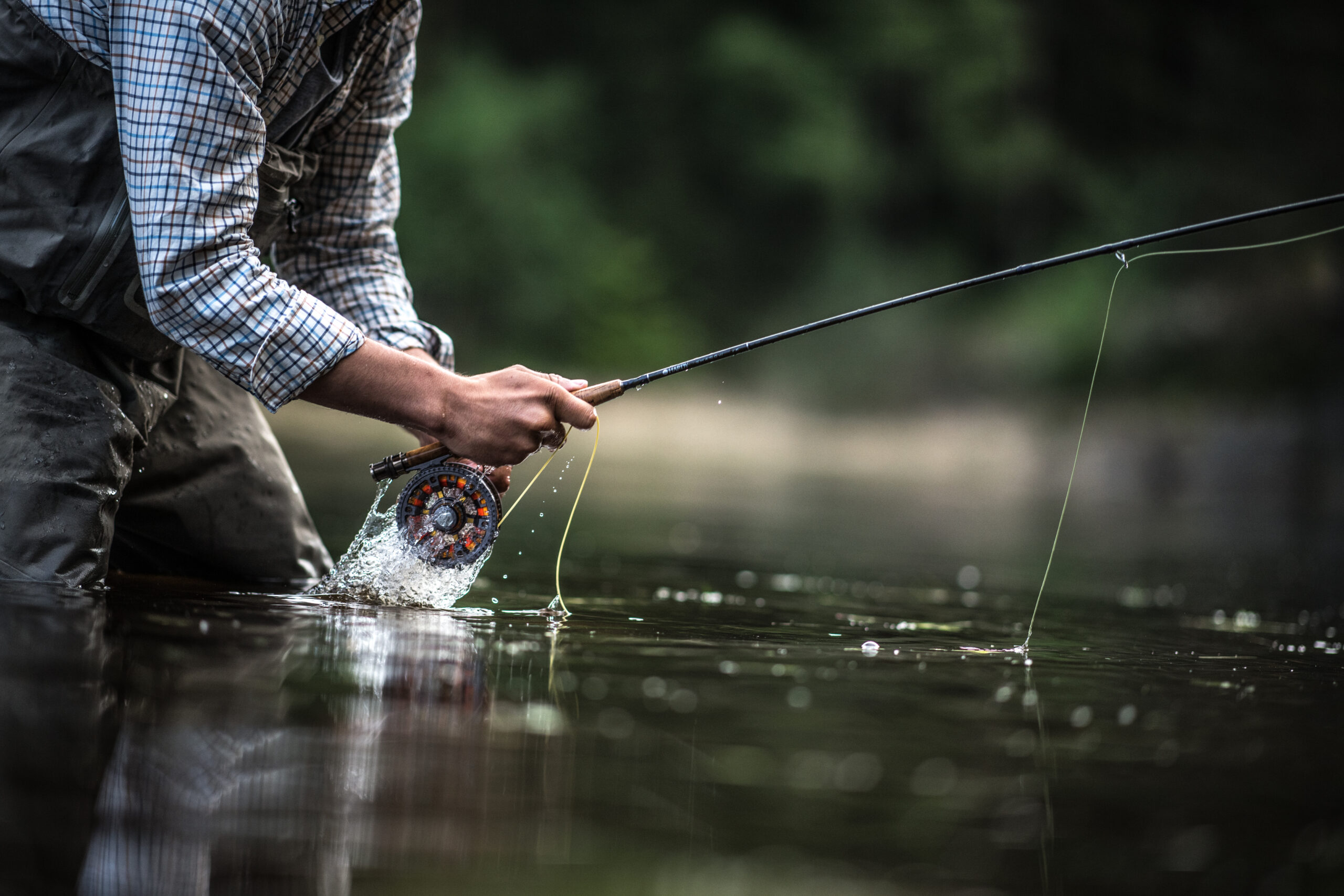Alaska Fly Fishing Flies
Alaska is a dream destination for fly fishing enthusiasts. With its pristine rivers, lakes, and streams, the state offers opportunities to catch various fish, including salmon, trout, and steelhead.
But to be successful in Alaska’s unique fishing environment, you need the right flies.
Here’s a guide to some of the best flies for Alaska fly fishing, designed to help you land more fish during your next trip.
1. Egg Patterns
Egg flies are highly effective in Alaska, especially during salmon spawning season when fish feast on drifting eggs.
These flies mimic fish eggs and are essential when targeting salmon, rainbow trout, Dolly Varden, and Arctic char.
Popular Patterns:
- Glo Bug
- Nuke Egg
- Beadhead Egg Fly
Best Time:
Late summer through fall, during salmon spawning runs.
2. Streamer Flies
Streamers are larger flies that imitate baitfish, leeches, and other underwater creatures.
These patterns are effective for aggressive species like salmon, steelhead, and oversized rainbow trout.
They are ideal for Alaska’s swift currents and deep pools where predatory fish hunt.
Popular Patterns:
- Dolly Llama
- Egg Sucking Leech
- Muddler Minnow
- Zonker
Best Time:
Throughout the fishing season, especially early summer and fall.
3. Salmon Flies
Alaska is famous for its abundant salmon runs, and targeting these fish requires using flies that mimic their food or trigger their aggressive instincts.
Whether fishing for Chinook (King), Coho (Silver), Sockeye, or Pink salmon, specific flies are tried and tested in Alaskan waters.
Popular Patterns:
- Pink Pollywog (especially effective for Coho)
- Alaskan Popper
- Flash Fly
- Comet
Best Time:
Summer and early fall during peak salmon runs.
4. Nymph Patterns
Nymphs are another effective option in Alaska, particularly for trout and char.
These flies mimic underwater insects in their larval stage and are incredibly productive in lakes, streams, and rivers where fish feed heavily on nymphs.
Popular Patterns:
- Hare’s Ear Nymph
- Prince Nymph
- Stonefly Nymph
- Copper John
Best Time:
Throughout the season, especially in rivers and lakes.

5. Dry Flies
While Alaska is known more for streamer and nymph fishing, dry flies can also be effective in certain conditions, particularly for trout and grayling.
Dry flies are designed to imitate insects on the water’s surface, attracting fish feeding on top.
Popular Patterns:
- Elk Hair Caddis
- Parachute Adams
- Stimulator
- Mosquito Dry Fly
Best Time:
Late spring and summer, during insect hatches.
6. Flesh Flies
As salmon die off after spawning, their decaying flesh becomes a significant food source for trout, char, and other fish.
Flesh flies are designed to imitate pieces of dead salmon flesh and are highly effective during the fall when the salmon run is winding down.
Popular Patterns:
- Flesh Fly
- Cotton Candy Fly
- Articulated Flesh Fly
Best Time:
Fall, after the salmon have spawned and are decomposing in the rivers.
7. Leech Patterns
Leeches are a standard part of the food chain in Alaskan waters and are particularly attractive to trout, char, and salmon.
These patterns work well in lakes and rivers, and their lifelike movement draws in fish from afar.
Popular Patterns:
- Woolly Bugger
- Simi Seal Leech
- Moose Turd Leech
Best Time:
Early spring through late fall.
8. Mouse Patterns
Mousing, or using flies that imitate small rodents, is a unique and exciting way to catch Alaskan trout.
These flies are typically used to target big rainbow trout and are particularly effective in summer.
Popular Patterns:
- Morrish Mouse
- Mr. Hankey
- Deer Hair Mouse
Best Time:
Summer, particularly during warm months when trout are more aggressive.
Fly Fishing Tips for Alaska:
- Match the Hatch: It is crucial to understand the fish’s food source at different times of the year. In Alaska, this often means eggs, flesh, or baitfish patterns.
- Use Strong Tackle: Alaska’s fish are large and powerful, especially salmon, so ensure your gear can handle the fight.
- Fish with a Guide: Hiring a local guide can be invaluable for first-time visitors.
They know each season’s best spots and most effective fly patterns.
Conclusion:
When fly fishing in Alaska, it’s critical to have a variety of flies suited to the specific conditions and species you’re targeting.
From egg patterns to mouse flies, plenty of options cater to Alaska’s waters’ unique environment.
Stock up on these proven fly patterns, and you’ll be well-prepared to catch the fish of your dreams in one of the world’s premier fishing destinations.
